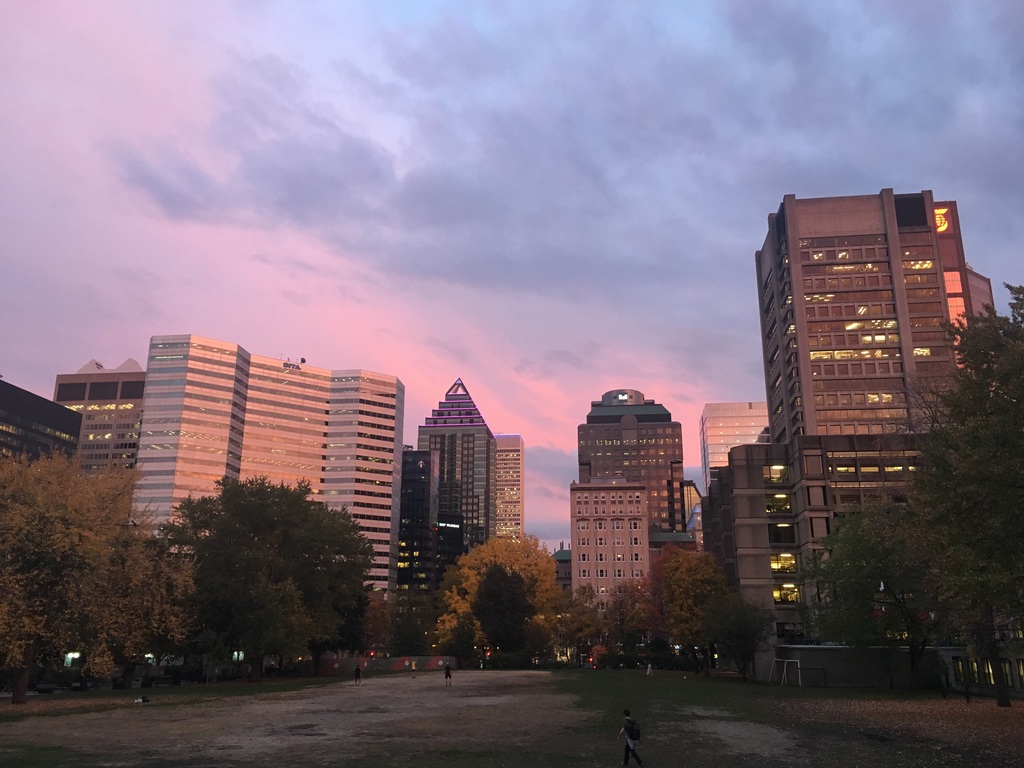October has been a lovely month on the McGill campus. Students have been happily embracing the warm weather – soaking up the sun in between classes and enjoying the luxury of not freezing in the perpetually chilly McLennan library.
Temperatures in Montreal have reached over 15°C twenty-two out of twenty-seven days this month. In October 1999, temperatures only surpassed 15°C seven out of thirty one days.
Campus is abuzz with chatter about how wonderful the extended summer weather has been. Less often are people talking about how problematic this warmth really is.
Among climate discourse, a magic number constantly discussed: 2°C. Since the late 1800s, global temperatures have risen by 1°C. According to NASA, the hottest year on record was 2016, which succeeded the previous record-breaking year, 2015, which followed the preceding record-breaker, 2014. An additional global increase of 2°C would push the earth’s temperature past the tipping point that humans could tolerate.
Transcending this tipping point would mean the disappearance of up to 50% of Earth’s plants and animals by 2080 and a three foot increase in sea levels, which would leave coastal areas (where half of the population lives) underwater by 2100. It would mean longer droughts and more intense storms, which disrupt global food supply and ruin livelihoods. Ultimately, a two degree increase in temperature would mean a higher likelihood of geopolitical conflicts over resources, billions of ‘climate refugees,’ and the erosion of political, economic, and social stability.
What must be accomplished to avoid reaching this two degree temperature increase?
The first step is transitioning to 100% clean electricity by 2030, and 100% clean energy by 2050. This sounds very ambitious as it involves vast transformations including decarbonizing sectors which are fossil-fuel dependent – such as transportation and heavy industry – in addition to ending dependence on coal and natural gas entirely. Meeting this goal would allow for a 50% chance of staying under the two degree margin.
A recent paper by a group of European scientists provided a road map for the path ahead, and explained that global CO2 emissions must fall by 50% each decade. If current levels of CO2 emissions prevail, accomplishing this goal is highly unlikely.
In 2015, world leaders signed the historic Paris Agreement, pledging to hold global temperatures below the two degree margin above pre-industrial levels. One problem with this goal is how abstract and ambiguous it is. So far, countries have outlined their own “Nationally Determined Contributions,” or vague plans for reducing emissions, which likely don’t add up to staying below 2°C.
Take Canada, a country that prides itself on its environmental awareness and capabilities. According to a recent appraisal by Julie Gelfand, Canada’s Environment Commissioner, Canada has, since 1992, proposed several plans to reduce its emissions and has set four international targets to cut emissions, but has yet to come even close to meeting any of them. In fact, emissions have actually increased by 15%, since Canada’s first proposition twenty-five years ago.
In the words of Political Scientist Scott Barret, “There’s no enforcement mechanism at all in this agreement. It’s easy to agree to something when you announce the pledge yourself and when you know you’re not really going to be held accountable as to whether you meet the pledge or not.” According to Barret and other climate commentators, this ethos has come to characterize the climate goals set forth by various countries, including Canada.
Sunny October doesn’t sound so great afterall.
An ongoing issue with climate news is that the majority of articles on the topic present ominous reports and predictions, such as the ones described above, and stop there. Approximately 85% of all media reporting on climate is framed with an element of disaster and doom. As psychologists highlight, this sort of ‘terror-framing’ leaves people feeling helpless, and encourages them to activate defense mechanisms, which subsequently prevent them from internalizing the realities of climate change.
According to Per Espen Stoknes, a psychologist at the Center for Climate Strategy of the Norwegian Business Institute, the ways in which climate news is currently portrayed is the “greatest communication failure of all time.”
As a means of changing this mindset, here are five things that you can do today to help ensure that next October isn’t quite so sunny:
- Help encourage our governments to take more drastic steps on climate action, using this simple 10-step-template of a letter to your local MP: http://downtoearthmother.com/2014/11/17/tips-writing-mp/#comment-212236
- Give your input to a McGill student attending the UN Conference on Climate Change (where progress on the Paris Agreement is evaluated/furthered), in order to have your voice heard by international leaders: https://tinyurl.com/y8r4wplq
- Subscribe to McGill’s Environment ListServ to get updates on environment news and events happening at McGill: https://www.mcgill.ca/mse/events-media/envirolist
- Explore the effects of your own lifestyle on climate change, by calculating your individual carbon footprint: https://carbonfund.org/calculate-your-footprint/?gclid=Cj0KCQjwsZHPBRClARIsAC-VMPCV5o7vpGu7_GdMKiy9ZCrUdcD-WlgMWJidEpO1JMz47oUN_7BrB3oaAnpEEALw_wcB
- Check out Paul Hawken’s website, which is the first (and only) comprehensive guide of the most effective solutions that exist to combat global warming: http://www.drawdown.org/solutions
Joelle Moses is a contributing climate news writer.









Thanks Joelle for an insightful piece .. and the pathways for actions we can take. Such an important reminder that every one of us makes a difference.